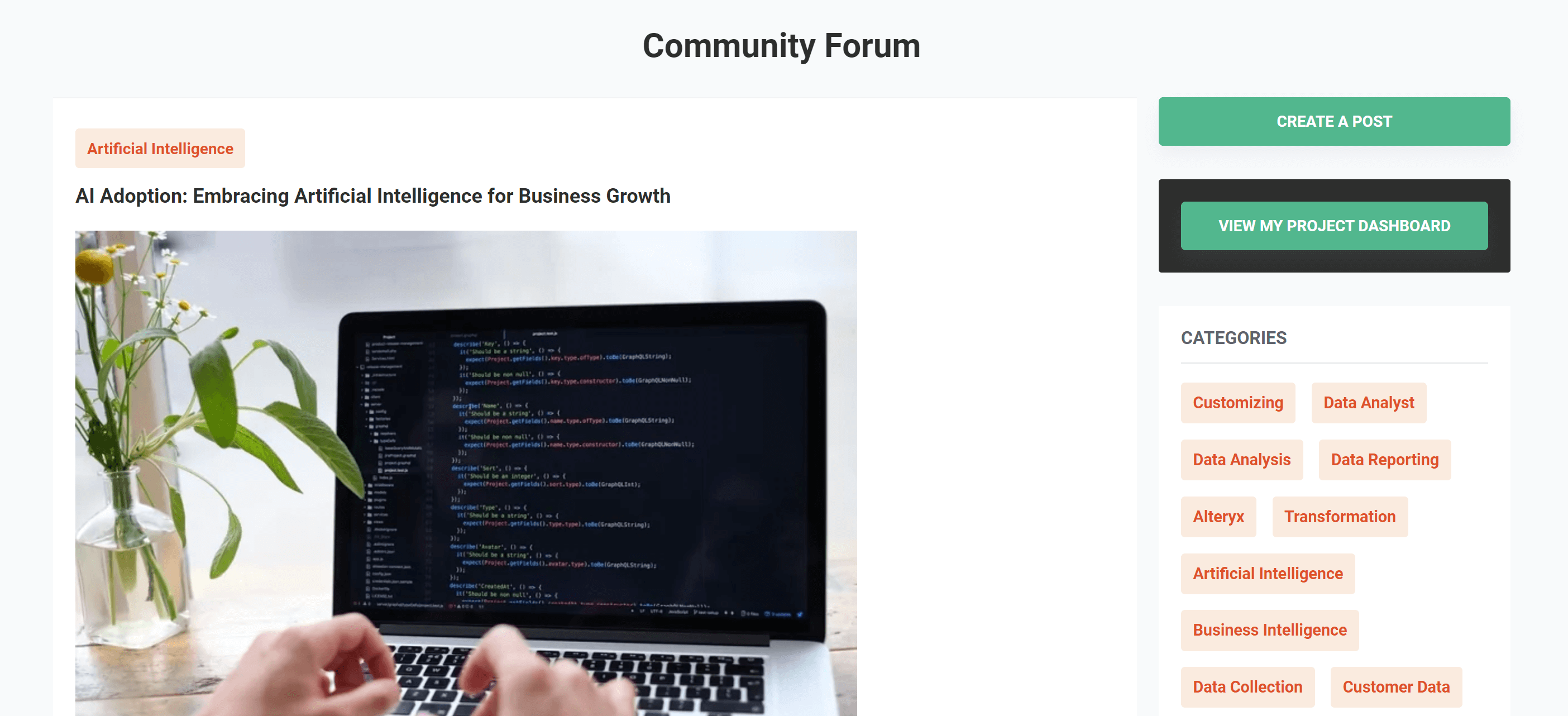8 Types of Financial Analytics to Manage Your Business Better

Table of content
1. Importance of Financial Analytics
2. Benefits of Using Financial Analytics for Your Business
3. Key Types of Financial Analytics for Business Management
4. Conclusion
Financial analytics is essential for modern businesses, especially as digital transformation continues to reshape industries. By diving deep into financial data, it helps companies make smarter business decisions based on facts rather than instincts. This means leaders can craft strategies that align with actual trends and insights, giving them a competitive edge. Financial analytics reveals key patterns and opportunities, helping companies prepare for the future, manage costs, and make smarter investments.
In today’s fast-paced world, financial analytics drives transparency and efficiency. It uses various tools and techniques to monitor, predict, and improve financial outcomes, making it easier for businesses to plan strategically. From identifying risks to boosting profitability, it plays a vital role in helping companies understand their financial health. As businesses continue to embrace digital transformation, the use of financial analytics has become crucial, enabling organizations to navigate complexities, optimize their operations, and thrive in a rapidly changing market.
Importance of Financial Analytics
1. Make informed decisions for business growth:
Financial analytics empowers organizations to make data-driven decisions, offering a clear understanding of their financial health. By analyzing complex financial data, companies can set strategic goals and identify new growth opportunities. Whether it’s deciding where to invest or how to manage cash flow, financial analytics ensures that every decision is aligned with the overall business objectives, fostering sustainable growth.
2. Optimize processes with effective resource allocation:
Financial analytics goes beyond just crunching numbers; it helps businesses optimize their operations for better financial outcomes. For instance, in procurement, financial insights can highlight the most cost-effective suppliers, ensuring efficient use of resources. Similarly, in marketing, analytics can identify which strategies yield the best returns, leading to more strategic resource allocation. This not only enhances operational efficiency but also ensures that financial resources are used where they can generate the most impact.
3.Set realistic and achievable goals:
Setting ambitious financial targets is essential, but ensuring they are realistic is even more crucial. Financial analytics provides insights from past trends, enabling businesses to set goals that are both challenging and attainable. With real-time data tracking, companies can monitor their progress and make necessary adjustments, keeping their strategies aligned with long-term business growth.
4.Proactively assess and mitigate risks:
Identifying potential risks early is vital for maintaining business stability. Financial analytics enables companies to spot warning signs, such as declining ROI or increasing debt, so they can address these issues before they escalate. By continuously evaluating risk reduction strategies, businesses can adapt and minimize financial threats, maintaining a solid foundation for growth.
5.Strategically plan for future success:
Planning for the future requires a deep understanding of market trends and potential uncertainties. Financial analytics, particularly through predictive sales analysis, helps businesses anticipate changes and prepare for various scenarios. This foresight enables companies to plan for market fluctuations, economic shifts, or the launch of new products, ensuring they remain agile and ready to seize opportunities.
Benefits of Using Financial Analytics for Your Business
1. Improved Decision-Making
Financial analytics equips businesses with accurate insights into financial performance, aiding in informed decision-making. By forecasting future performance, companies can strategically allocate resources, invest wisely, and implement operational changes.
2. Enhanced Risk Management
Financial analytics is crucial for effective risk management. By monitoring key indicators like liquidity ratios and market volatility, businesses can identify potential threats early and develop strategies to mitigate risks.
3. Increased Profitability
Analyzing financial data helps businesses spot inefficiencies and reduce costs. This enables management to make informed decisions that optimize operations, focus on profitable products, and ultimately boost revenue.
4. Enhanced Efficiency
Financial analytics identifies operational inefficiencies, allowing businesses to streamline processes and improve productivity. This leads to cost savings and higher profit margins.
5. Better Financial Planning
Accurate financial forecasting is essential for strategic planning. By integrating historical data and market trends, financial analytics enhances budget development and resource allocation, supporting sustainable growth.
6. Increased Transparency and Accountability
By providing detailed insights into financial performance, financial analytics fosters transparency and accountability. This encourages alignment across departments and promotes a culture of continuous improvement within the organization.
Key Types of Financial Analytics for Business Management
1. Predictive Sales Analysis
Predictive sales analysis uses historical sales data and statistical algorithms to forecast future sales trends. This approach helps businesses anticipate customer demand, optimize inventory levels, and allocate resources effectively, leading to improved sales strategies and profitability.
2. Product Profitability Analytics
This analysis evaluates the profitability of individual products or product lines. By assessing costs, revenues, and profit margins, businesses can identify high-performing products and make informed decisions about pricing, marketing strategies, and product development to enhance overall profitability.
3. Value Driver Analytics
Value driver analytics focuses on identifying key factors that influence a company’s value. By analyzing drivers such as revenue growth, customer satisfaction, and operational efficiency, businesses can prioritize initiatives that will maximize their overall value and enhance shareholder returns.
4. Financial Ratio Analytics
Financial ratio analysis involves evaluating relationships between financial statement items to assess a company’s performance and financial health. Ratios like return on equity (ROE) and current ratio provide insights into profitability, liquidity, and operational efficiency, helping stakeholders make informed decisions.
5. Scenario and Sensitivity Analysis
This analytical approach assesses how different variables impact a company’s financial performance. By creating various scenarios and measuring outcomes, businesses can better understand risks, optimize budgets, and make more informed strategic decisions, especially under uncertain conditions.
6. Growth Rate Analysis
Growth rate analysis examines historical performance to project future growth. This analysis helps businesses identify trends, evaluate market opportunities, and inform investment decisions. It can focus on revenue, profit, or other key performance indicators, allowing companies to set realistic growth targets.
7. Cash Flow Analysis
Cash flow analysis evaluates the inflows and outflows of cash within a business. This analysis is crucial for understanding liquidity and financial health, ensuring that a company can meet its short-term obligations while also identifying opportunities for investment and growth.
8. Variance Analysis
Variance analysis compares actual performance against budgeted or forecasted figures. By examining discrepancies, businesses can identify areas for improvement, understand the reasons behind variances, and adjust strategies accordingly to enhance operational effectiveness and financial performance.
Conclusion
Implementing these financial analytics techniques allows businesses to gain deeper insights into their operations and financial health. By leveraging data-driven strategies, companies can enhance decision-making, improve profitability, and effectively manage risks, ultimately leading to better business outcomes.
Get your data results fast and accelerate your business performance with the insights you need today.



